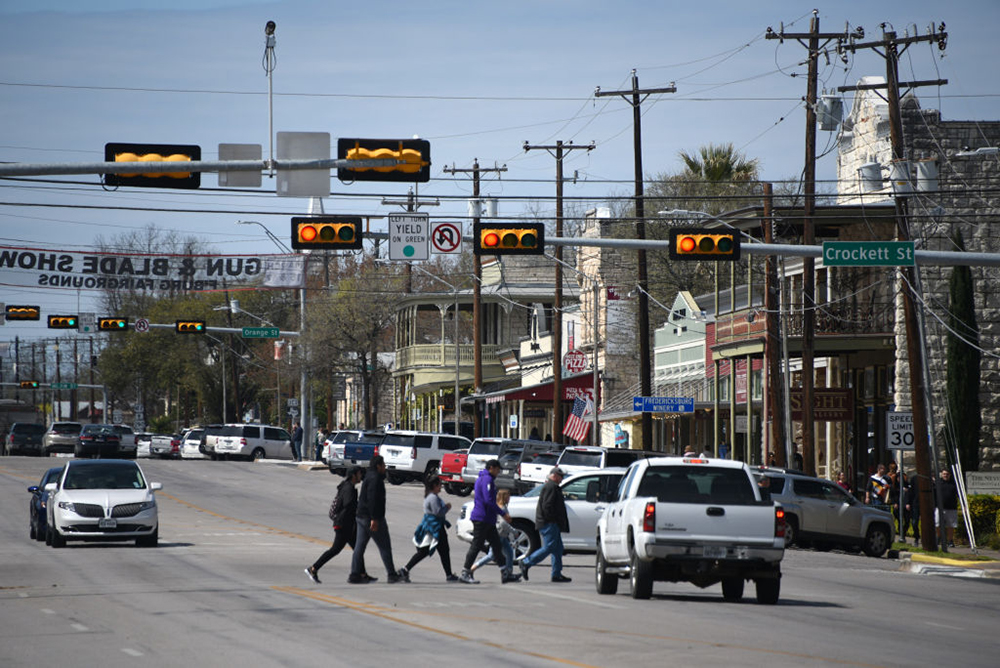Today marks the fifth anniversary of when the state-controlled government of Flint, Michigan, negligently chose to prioritize short-sighted cost-savings over its residents’ health and access to clean, safe water. The toll of this state-sanctioned poisoning affected more than 9,000 Flint children under the age of six, a portion of whom are set to start kindergarten this year.
The children of Flint and another 3,000 communities across the U.S. with dangerously elevated lead levels in their blood face an uphill, lifelong road littered with lead-induced developmental challenges, caused and exacerbated by long-neglected infrastructure ill-equipped to meet their needs, and a national public seemingly reluctant (if not apathetic) to do anything meaningful about it. Infrastructure might not be the “hottest” policy issue to pursue, but the consequences of ignoring it are all too clearly costly and deadly.
Get Talk Poverty In Your Inbox
Five years after Flint entered the national consciousness, the perpetrators of this man-made crisis continue to go unseen and unscathed. And Flint is just the beginning. Because of bad corporate actors, derelict landlords, and governmental neglect and mismanagement at all levels, our nation’s infrastructure has become toxic and dilapidated, in need of more than $2 trillion worth of investments and 21st century policies that prioritize the most affected and proactive prevention rather than costly yet reactionary and incrementalistic approaches that favor wealthy enclaves.
Despite declarations to the contrary, with 2,500 lead-tainted pipes still in use, Flint remains poisoned and we as a nation still haven’t put our money where our mouth is in equitably ensuring that every person has access to clean water and safe homes, free from health hazards. The last major government study conservatively estimated that more half a million kids residing throughout the U.S. have significant levels of lead in their bloodstream as a result of the more than 9 million homes, neighborhoods, and schools that still have lead paint and pipes within their walls.
While Congress banned lead in plumbing systems 33 years ago and the United States, as a whole, has made important investments in reducing overall lead exposure, federal efforts have stopped short of pursuing an aggressive and comprehensive plan to remediate the millions of affected water pipes. Though the poisoning of Flint brought crucial attention to our nation’s tainted water systems, often overshadowed in the national conversation is the fact that lead-based paint is the most common, highly concentrated poisoning source for children in the United States. Despite being federally outlawed in 1978, lead-based paint remains within the crumbling walls, windowsills, and other surfaces of more than 37 million old homes and millions of aging buildings – schools, business spaces, and government offices – where inhabitants can easily ingest and inhale contaminated dust and paint-chips.
The cost of these man-made infrastructure crises is always more than dollars and cents – it’s irreversible nerve and brain damage, unexplained neurological symptoms, hookworms and “neglected tropical diseases,” in the rural South, and lives lost to severe pneumonia and raging wildfires. These, and countless other examples of lives irreparably damaged by deteriorating and ineffective infrastructure, do not exist in isolation.
Poor infrastructure impacts everyone, regardless of race and class status, but – like so many other issues in America – racial minorities and people living in poverty experience the brunt of that pain. More than half of Flint’s population is African American and slightly more than 40 percent of residents live in poverty; similar stories reported in cities like Milwaukee, in rural areas of Kentucky or Alabama, and elsewhere are often in majority black areas and/or where poverty levels are high. Members of the Navajo Tribe continue to deal with gradual poisoning as a result of uranium mining in the 1950s, and towns in Alabama have become a dumping ground for human waste because of our nation’s failing wastewater infrastructure.
When these communities are observed in aggregate, rather than as separate, local issues, we can start to see the disturbing patterns of negligence, apathy and harm. Disasters like in Flint are part of a larger national failure, and our delayed and insufficient response is a public display of a larger, more heinous truth: America still hasn’t decided that clean water and a safe environment is not a privilege, but a right. An investment in our infrastructure and a commitment to maintaining accountability and transparency, when done right, is a commitment to just and equitable policy – and an affirmation that everyone deserves to live in an environment that is safe and healthy.
Even five years later, the Flint water crisis remains a crucial talking point for those looking to highlight the many inadequacies in government responses to disasters. It’s been highlighted by celebrities, Miss America pageant contestants, presidential candidates, and Twitter users expressing their frustration towards what they perceive as less important funding priorities, but that righteous anger hasn’t translated to a fury scaled for the national catastrophe we’re heading towards.
It’s not that the public is wholly apathetic to the dramatic consequences of a lack of investment in our country’s infrastructure. Poll after poll actually indicates that voters support federal spending on infrastructure improvements. In the 2016 and 2018 elections, there were local ballot measures that centered the need for more funding for infrastructure priorities – and many of them passed with voter support. However, that intensity of local support across the nation was focused on transportation issues rather than issues of water and sewage systems, broadband or electric utilities, of which privatization can further complicate matters. And even as voters express support for infrastructure measures, their higher priorities often still lie in policy areas such as the economy, health care, and education — all issues that can feel more immediate and pressing despite their inextricable links to the basic facilities and systems that America relies on.
To ensure that our infrastructure stops poisoning us today and in the future, we must redress the public policies and actions that segregate and neglect communities as well as earnestly hold accountable public officials, corporations, and landlords who put and keep people in harm’s way. And, ultimately, we must prioritize preventing these transgressions in the first place. Government, at all levels, must comprehensively support and provide restitution for the individuals and families poisoned for life because of lead and other preventable toxicant-exposures born from our compromised infrastructure.
Ultimately, Congress must seek to go beyond just getting out of our nation’s $2 trillion repair funding hole or fulfilling the hollow infrastructure promise of the current commander in chief. To truly end the ongoing poisoning and ensure that no community has to ever again suffer from this type of preventable, man-made infrastructure crises, the federal government will need to enact a full-scale, innovative package of national investments that helps harmed communities remediate and rebuild, improves the nation’s standard of living, restores public oversight and reasserts local control over the vital building blocks that make healthy, just, and thriving communities. Without that commitment, we’ll watch crises like Flint continue to unfold across the nation – and this time, we won’t be able to feign surprise. The lives of residents in Flint, and the thousands of other communities just like it, depend on it.










